What’s in the bowl? A guide to the confusing world of pet food choices!
It used to be that you got a pet, you got a bag of food, you poured out the biscuits into a bowl and then they ate them. Simple, easy, stress free.
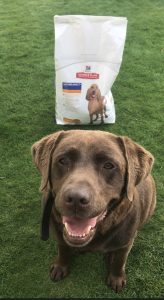
Pet, check. Food, check. Done!
But now, things can seem very different!
You can’t miss on social media, forums, and websites the huge amount of options you have for your dog’s dinners and the passionate opinions they inspire!
Should you home cook? Should you raw feed? What about grain free? How about breed specific foods? What is a life stage diet? Should you be making them vegetarian, or even vegan?
It can be extremely confusing, especially when all you want to do is the best for your pet.
So, here is my simple guide!
Kibble
Feeding kibble can almost seem cruel after you’ve been on the forums but really for the vast majority of pets and families, it really is the best choice. For nutrition, for health AND for convenience but only if you feed a great quality diet!
A message that is often missed is that not all kibbles are equal and while some are indeed pretty rubbish, many are fantastic and will be hugely beneficial for your pet.
Premium companies will have multiple, possibly hundreds, of specialist pet nutritionists on staff. Their diets will undergo rigorous testing before it is allowed on sale, especially if it makes any medicinal or health claims. Diets are batch tested to ensure they consistently deliver what they are supposed to.
There is also a huge range of kibble diets available, meaning you can pick the perfect diet for your pet. There are ones for every life stage because nutritional needs change hugely they age. Ones for specific breeds, ones for neutered pets, ones to help with medical problems, ones which reflect their lifestyles, for example working pets or indoor cats, the list goes on.
And they aren’t boring! Pets have very different tastebuds to us, they also don’t have any ‘need’ for a varied diet and for many pets; chopping and changing what you feed can lead to fussy feeding habits or, worse, upset tummies!
However, although the biscuits themselves aren’t boring, hoovering them up out of a bowl can be! Our pets are active and intelligent, so why not make mealtimes fun? Kibble is great for this because you can easily ditch the food bowl and use puzzle feeders, treat toys or just simply scatter them in the garden for them to snuffle out.
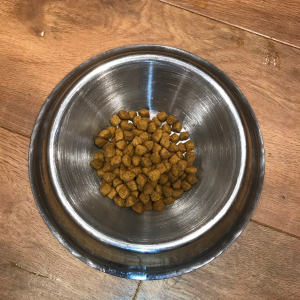
It might not look like it, but huge amount of science and nutrition goes into those little biscuits!
Raw Food
This is pretty much what it says on the tin (except there isn’t one!). Giving your dog raw meat as the main basis of their food, plus maybe some vegetables and a few supplements.
However, this kind of feeding it isn’t for everyone and the World Small Animal Veterinary Association actively advises against it because they consider the risks outweigh any potential benefits. 1
Firstly, raw meat inevitably carries bacteria. These will be smeared around wherever you feed your dog, be in their mouth, on their fur (especially beardy breeds!) and shed in their faeces. It can also, if not frozen for several weeks before being fed, infect your dog with parasites.
However, many of these issues can be countered by good household hygiene and also by feeding a diet registered with the Pet Food Manufacturers Association, if you are in the UK. They insist their members follow strict guidelines to ensure foods are as safe as possible, and they HAVE to be clear of Salmonella. Of the hundreds of Raw food companies in the UK, only 11 are PFMA registered. You can see the list here; https://www.pfma.org.uk/raw-feeding-factsheet
Inevitably though, there are still risks with bacterial spread and it is not a good idea to use these foods in homes with young children or immunocompromised people.
There is also a risk that chewing on bones can damage teeth or cause gut problems if large chunks are swallowed. However, these can be minimised by careful choice of bones and monitoring your pet while they eat them.
Ensuring our pets are eating a nutritionally balanced diet is very important at every stage of their lives but especially when they are growing. It is vital that young animals have enough calcium for proper bone development and this is extremely difficult to achieve in a raw diet.
The most extreme example is the large breeds of dog; they can grow 10 times their size in just the first year! But for any puppy or kitten even a couple of weeks of incorrect mineral ratios could have lifelong consequences.
This is also true for adult animals, think of how short our pet’s life spans are in comparison to ours. Feeding a diet where the nutrition levels aren’t quite right, even for just a few months or a year, could have significant repercussions.
The bottom line with raw diets is that there are an awful lot of proven negatives to these foods and no proven benefits.
I don’t feed raw to my animals. It just doesn’t suit my lifestyle or my family. However, it is true that some pets do very well on it and if you chose to feed raw, your vet will support you in that decision and help you to get it right.
My advice would be to use a diet from a reputable PFMA registered company, ensure good household hygiene and don’t start until your pet is fully grown!
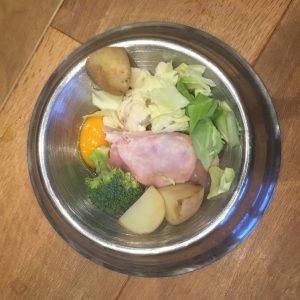
There is currently no evidence to show any significant advantage of raw food over more conventional diets but plenty of evidence of their risks.
Home cooked diets
Our pets are our family. It is natural to want to do the very best for them and cooking their meals can seem like a perfect way to do this.
However, here is my professional advice- just don’t do it!
It is phenomenally difficult to provide a truly healthy and balanced diet for our pets. Studies have shown that, even with animal professionals, following recipes, and time and again they fall short of the mark.2 Also, a recent study of over 100 recipes available online discovered every single one was inadequate!3
It is hard enough to provide ourselves with a properly balanced diet, never mind our pets!
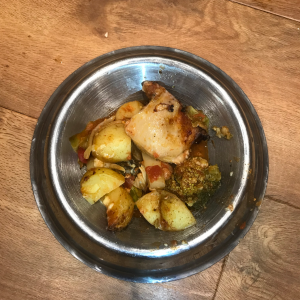
We love to show love with food. It is only natural that our instinct would be to do that with our pets but be honest, could you research, prepare and cook a perfectly balanced meal every single day for them?
Grain Free
Another new buzz word and trend! The enthusiasm for grain free diets stems from the belief that really, under their fluff, our pet dogs are wolves and wolves eat a wild, grain free diet.
The actual truth is is that the floppy eared fool lying on your feet is genuinely as far from a wolf as they look. Dogs became domesticated 15,000 years ago when they started to hang out near human settlements, eating all the scraps they were given; meat AND grains! Over this time, their DNA has changed significantly and they now can digest all kinds of roughage without problems.
Also, recently some grain free diets have been shown to be causing heart disease in dogs in America.4
Vegan and Vegetarian Diets
It is pure anthropomorphism to impose a vegan or vegetarian diet on our dogs and cats and there are serious ethical questions to be asked about the practice.
Dogs are omnivores and so can survive on a vegetarian diet but it is much more difficult for them to extract all the nutrition they need and only in very specific cases, usually severe food allergies, is it wise to try this kind of food.
Cats are obligate carnivores and without meat in their diets, they will become extremely sick. Some manufactured vegan diets contain synthetic versions of the proteins they need but we have very little idea of how this effects them in the long term and, again, really cannot be justified as it is simply satisfying our needs not theirs.
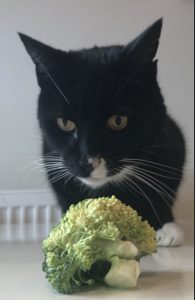
Cats are carnivores.
So yes, there is a huge choice and range of pet foods out there. Picking what will be best for your pet, and for you, can be daunting and opinions online are often vociferous, divisive and seem designed to confuse you and make you feel bad!
My advice? Stick with the kibble!
Chose a well-respected brand, preferably one which has a great range of diets and is backed by solid scientific research (not TV adverts and cute cartoons!). Find a diet which fits with your pets age, breed and lifestyle. Throw out the food bowl and make mealtimes more interesting but the bottom line is….
….. open the bag, feed your pet, and get on with your day!
It really is that simple!
**This blog has been sponsored by Hills Pet Foods, but all opinions in it are my own!**
You can follow me on Twitter; @cat_the_vet, FaceBook; Cat_The_Vet and Instagram, Cat The Vet
If you liked this blog why not read ‘How Do You Show Your Pets You Love Them?’ or ’10 Ways To Be An Awesome Dog Owner!’?
1) https://www.wsava.org/WSAVA/media/PDF_old/WSAVA-GNC-raw-diet-statement-12-3-14.pdf
2) http://citeseerx.ist.psu.edu/viewdoc/download?doi=10.1.1.918.61&rep=rep1&type=pdf
3) https://avmajournals.avma.org/doi/10.2460/javma.254.10.1172